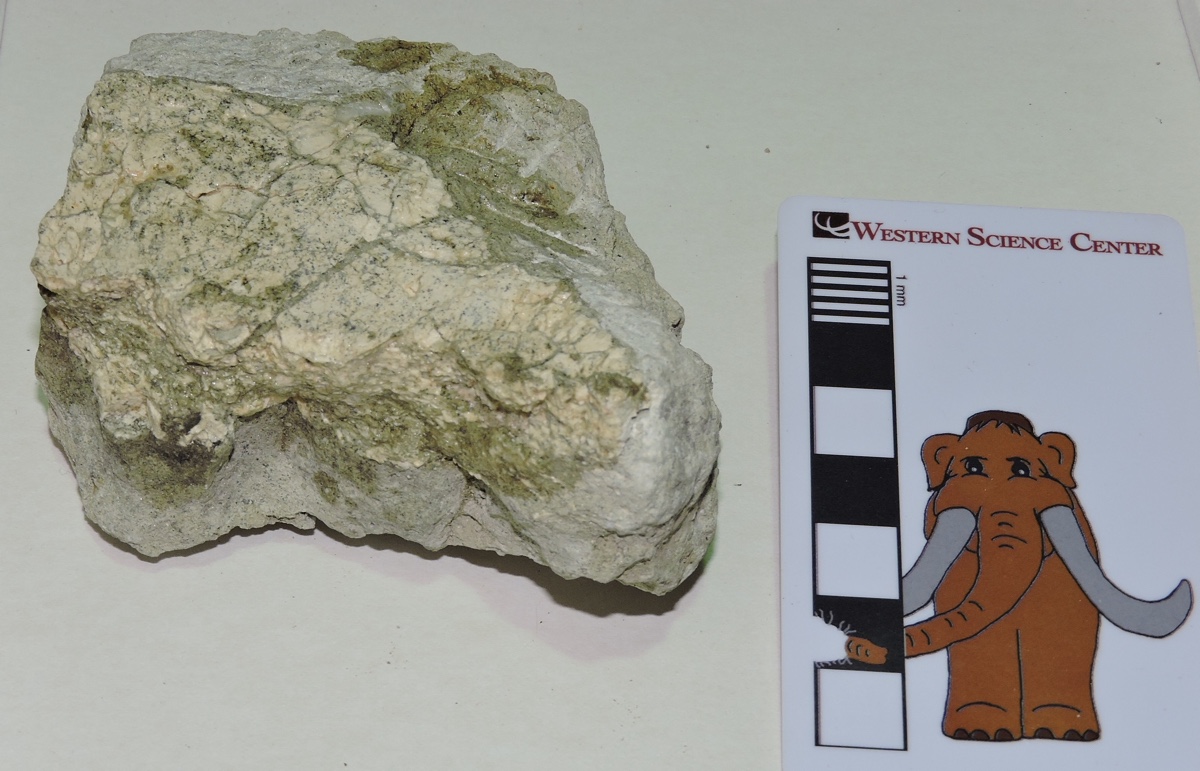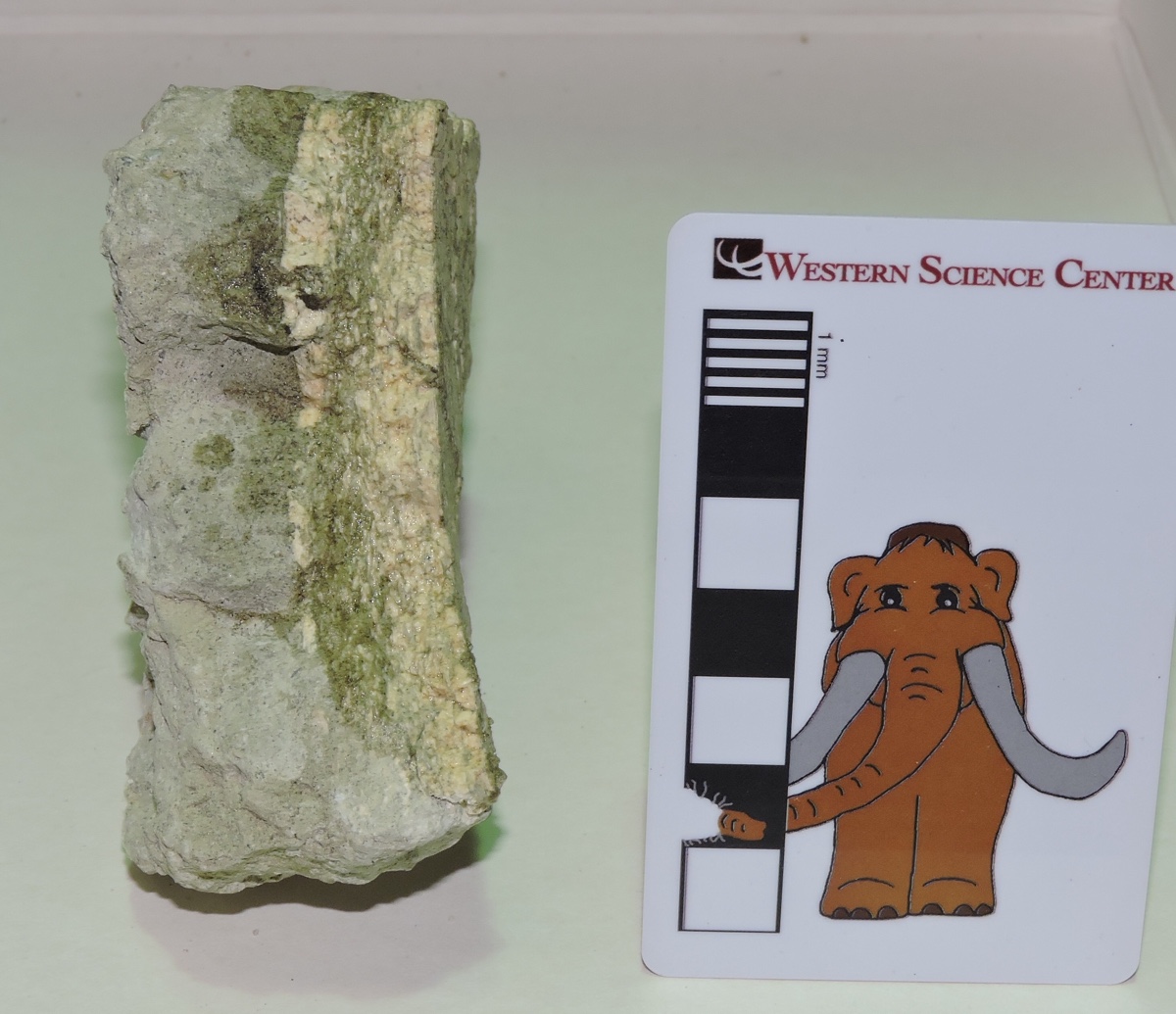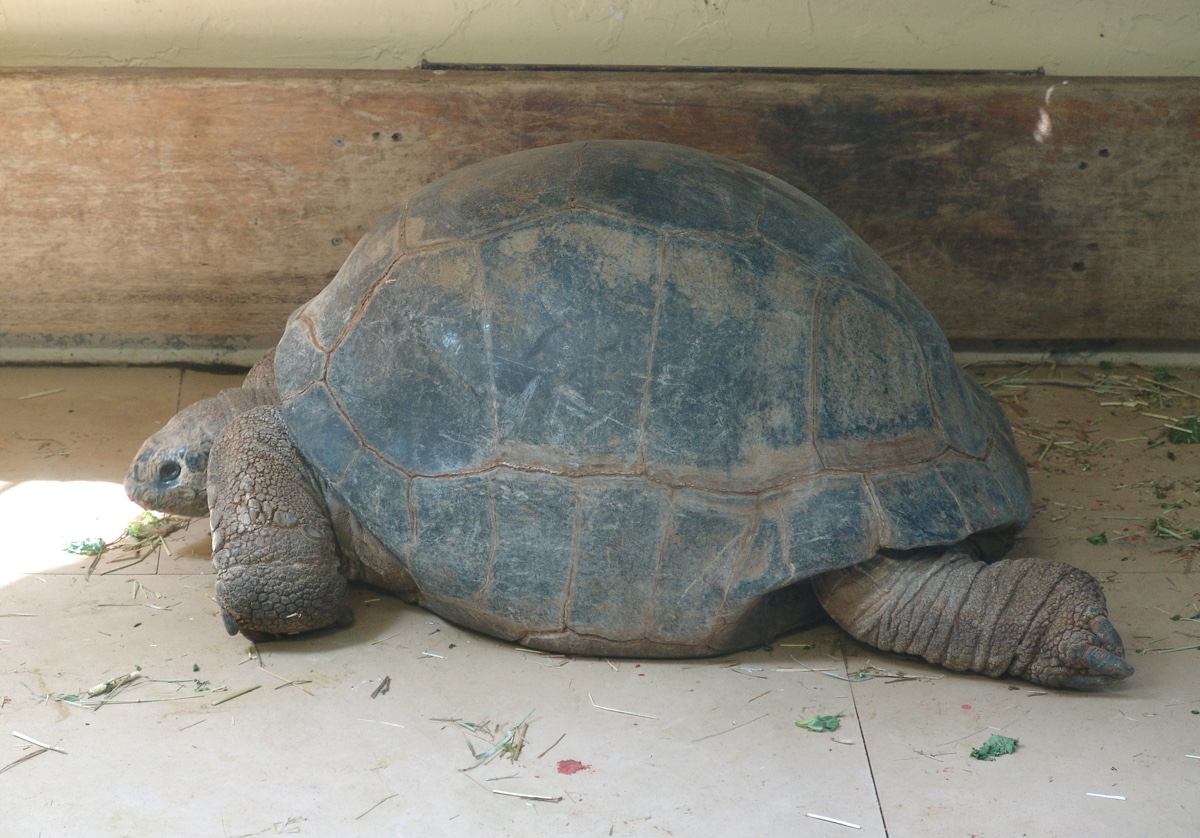 When visitors get "behind the scene" tours of fossil repositories, they are often surprised at the spectacularly unimpressive appearance of some of the fossils. A lot of preserved fossil specimens may not be especially attractive to look at, but they can still provide important scientific information about particular anatomical features, the amount of variation present, or the presence of a particular organism in an ecosystem. The nondescript bone shown above is from the Southern California Edison El Casco Substation in northern Riverside County. The light grey areas are sediment still adhering to the bone. The preserved fragment is broad and flat, and because it's broken we can see the cross section:
When visitors get "behind the scene" tours of fossil repositories, they are often surprised at the spectacularly unimpressive appearance of some of the fossils. A lot of preserved fossil specimens may not be especially attractive to look at, but they can still provide important scientific information about particular anatomical features, the amount of variation present, or the presence of a particular organism in an ecosystem. The nondescript bone shown above is from the Southern California Edison El Casco Substation in northern Riverside County. The light grey areas are sediment still adhering to the bone. The preserved fragment is broad and flat, and because it's broken we can see the cross section: Both surfaces are composed of very thick layers of dense cortical bone, with spongy bone sandwiched between them. This internal structure in a broad, flat bone in commonly seen in turtle shells.What's remarkable is that this shell fragment is almost 2 cm thick. The only land turtle known from North America in the Pleistocene with such a massive shell is the extinct giant tortoise Hesperotestudo. Hesperotestudo is an extinct genus related to the modern gopher tortoise, but in terms of size it was more similar to the living giant tortoises of the genus Geochelone:
Both surfaces are composed of very thick layers of dense cortical bone, with spongy bone sandwiched between them. This internal structure in a broad, flat bone in commonly seen in turtle shells.What's remarkable is that this shell fragment is almost 2 cm thick. The only land turtle known from North America in the Pleistocene with such a massive shell is the extinct giant tortoise Hesperotestudo. Hesperotestudo is an extinct genus related to the modern gopher tortoise, but in terms of size it was more similar to the living giant tortoises of the genus Geochelone: There were a handful of bones from the El Casco Substation that were tentatively referred to Hesperotestudo. While none of the specimens are visually stunning, they establish the presence of giant tortoises in Riverside County during the Ice Age.
There were a handful of bones from the El Casco Substation that were tentatively referred to Hesperotestudo. While none of the specimens are visually stunning, they establish the presence of giant tortoises in Riverside County during the Ice Age.
